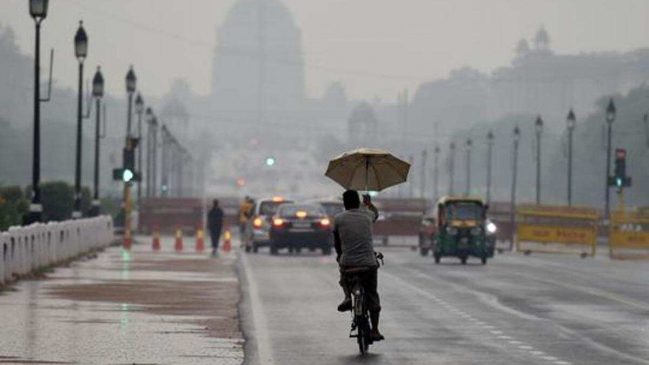India is likely to experience above-normal cumulative rainfall in the 2024 monsoon season with La Nina conditions likely to set in by August-September; know how it will impact the Indian economy
Read More: Divine: ‘Surya Tilak’ Illuminates Ram Lalla’s Forehead In Ram Mandir On Ram Navami | Watch
Every time India’s weather office comes up with its monsoon prediction, economists and market analysts keenly follow and discuss it. This is because the monsoon’s strength and weakness affect the Indian economy and markets accordingly. The India Meteorological Department (IMD) in its latest prediction says India is likely to experience above-normal cumulative rainfall in the 2024 monsoon season with La Nina conditions likely to set in by August-September.
Here’s how weather phenomena like El Nino, La Nina, and monsoons affect the economy and markets.
Sharad Chandra Shukla, director at Mehta Equities, told news18.com, “El Nino’s impact on monsoon is significant but as predicted by the IMD, monsoon this year is going to be normal and it will be geographically evenly distributed. Indian farmers have always struggled to get enough water in case of poor monsoon as the Indian irrigation system is not well developed. So, whenever the monsoon is not normal, it leads to a lower crop production. Thus, monsoon plays a significant role in the Indian agricultural sector and the Indian economy.”
What is El Nino, La Nina, Indian Ocean Dipole?
El Nino is a weather condition in the Pacific Ocean where the Australian coast gets heated and the South American coast gets cold. La Nina is the opposite phenomenon to it. While El Nino adversely affects monsoon winds in India thus reducing rainfall in the country and creating conditions like drought, La Nina is favourable for Indian monsoon.
The year 2023 was an El Nino year, where monsoon rains were recorded lower in India. This year, 2024, La Nina conditions are likely to set in by August-September, thus boosting the Indian monsoon.
This year, positive Indian Ocean Dipole (IOD), also known as Indian Nino, conditions are also predicted during the monsoon season. A positive IOD also helps monsoon in the Indian sub-continent and brings rainfall along the African coastline. In this, the Indian Ocean’s western side gets heated up while cold deep water comes to the easter side of the ocean.
Why Do El Nino, La Nina Matter for the Indian Economy?
Shukla said El Nino leads to reduced output and in turn leading to increase in food prices. “This has an inflationary impact on the entire economy though the contribution of agriculture sector in the gross domestic product (GDP) is not significant.”
Agriculture and allied activities of agriculture contributes only 15 per cent of the national income but it employs about 45 per cent of the Indian working population as per the National Sample Survey Office (NSSO), he said.
“Having a normal monsoon is extremely important as it impacts half of the nation population consumption pattern and the aggregate demand for products,” Mehta Equities’ Shukla said.
Read More: Wholesale inflation logs 3-month high
On the stock market impact, he said the impact of abnormal monsoon on the stock market has little impact on the market behaviour. Until it leads to a major drought or floods which affects significant geographic area the market generally ignores slight deviation in monsoon as a minor event. “The market depends largely on earnings growth and fund flows.”
How Is Monsoon Likely To Be In 2024?
The India Meteorological Department on April 15 said India is likely to experience above-normal cumulative rainfall in the 2024 monsoon season with La Nina conditions likely to set in by August-September.
However, normal cumulative rainfall does not guarantee uniform temporal and spatial distribution of rain across the country, with climate change further increasing the variability of the rain-bearing system.
Climate scientists say the number of rainy days is declining while heavy rain events (more rain over a short period) are increasing, leading to frequent droughts and floods.
Based on data between 1951-2023, India experienced above-normal rainfall in the monsoon season on nine occasions when La Nina followed an El Nino event, India Meteorological Department chief Mrutyunjay Mohapatra told a press conference here.
India is likely to see above-normal rainfall in the four-month monsoon season (June to September) with cumulative rainfall rainfall estimated at 106 percent of the long-period average (87 cm), he said.
Positive Indian Ocean Dipole conditions are predicted during the monsoon season. Also, the snow cover in the Northern Hemisphere is low. These conditions are favourable for the Indian southwest monsoon, he said.
Moderate El Nino conditions are prevailing at present. It is predicted to turn neutral by the time monsoon season commences. Thereafter, models suggest, La Lina conditions may set in by August-September, Mohapatra said.
Read More: Can India weather the impact of geopolitical challenges on trade in FY25 as it did last year?
India received “below-average” cumulative rainfall — 820 mm compared to the long-period average of 868.6 mm — in 2023, an El Nino year. Before 2023, India recorded “normal” and “above-normal” rainfall in the monsoon season for four years in a row.



































